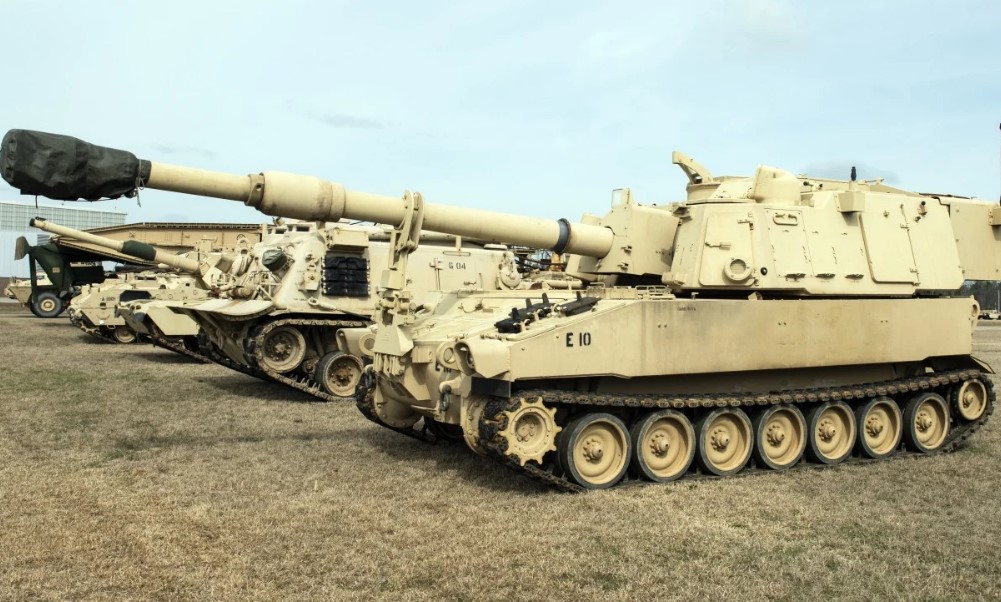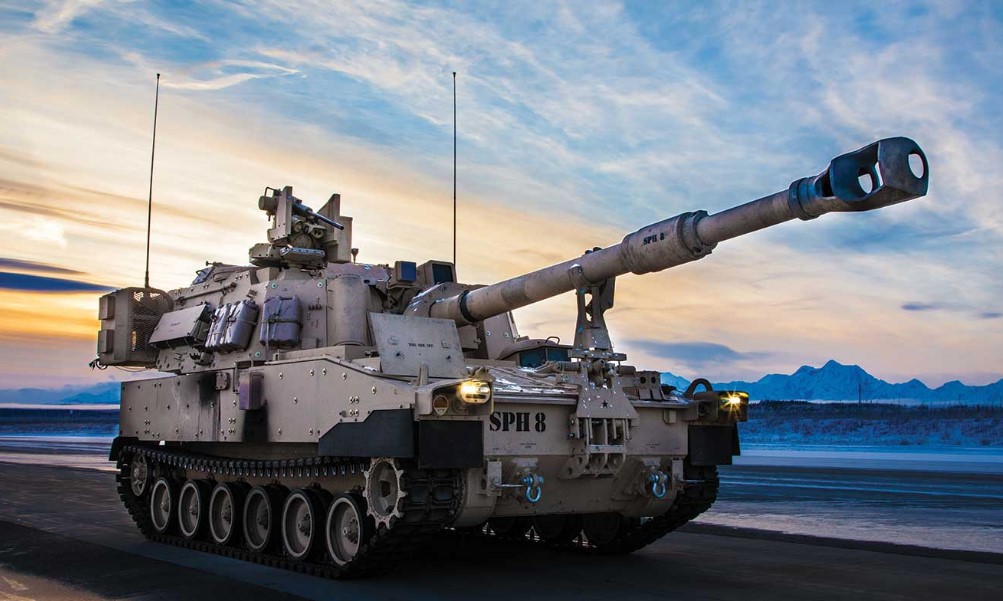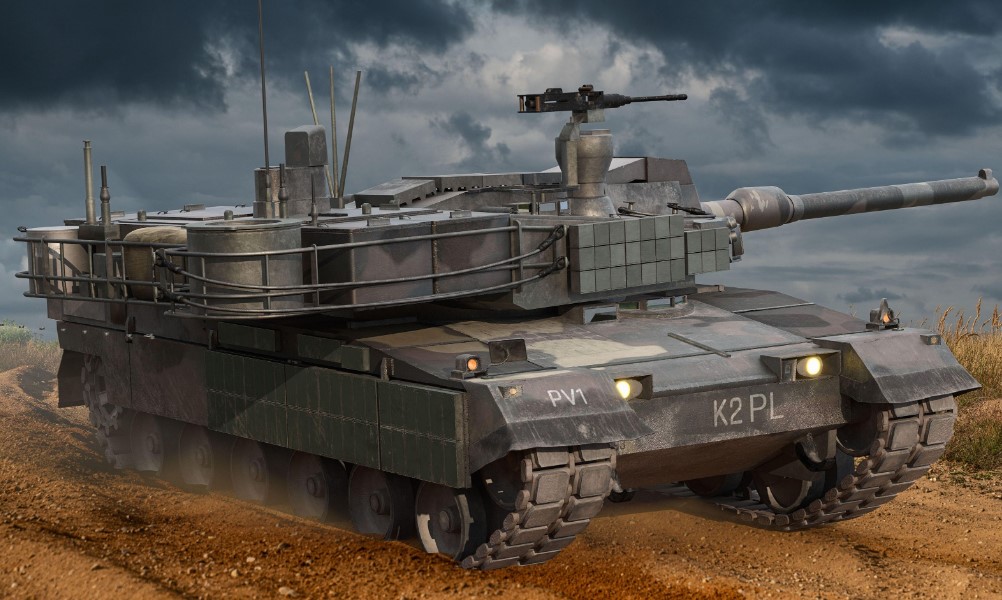Armored artillery systems are critical components in modern military operations. Their combination of heavy firepower, long-range capabilities, and armored protection makes them indispensable tools for both offensive and defensive combat strategies. From protecting key infrastructure to engaging enemy forces from a distance, these systems offer numerous advantages, including mobility, protection for the crew, and advanced automation.
Table of Contents
ToggleWhat is an Armored Artillery System?

An armored artillery system refers to a mobile, heavily protected weapon platform that delivers indirect fire over long distances. These systems are usually mounted on tracked or wheeled vehicles, allowing them to be moved swiftly across the battlefield. Their primary role is to provide sustained fire support, neutralizing enemy positions, fortifications, or even vehicles from a safe distance.
Key Characteristics of Armored Artillery Systems
- Firepower: The primary function of armored artillery systems is to provide powerful fire support. Most systems are equipped with large caliber guns, ranging from 105mm to 155mm, capable of delivering explosive shells over distances of 30-60 kilometers or more.
- Protection: Armored artillery systems are designed to protect their crew and critical components from enemy fire. The hull is often made from advanced composite materials or reinforced steel, offering protection against small arms fire, shrapnel, and even some anti-tank rounds.
- Mobility: Depending on the system, armored artillery can be either tracked or wheeled. Tracked systems generally offer better off-road mobility, ideal for rough terrains, while wheeled systems offer faster speeds on paved roads and quicker deployment times.
- Automation: Modern systems integrate advanced automation, including computerized fire control systems, GPS-guided targeting, and automated loading mechanisms. These enhancements not only increase accuracy but also reduce the crew’s workload and response time.
Detailed Information on the Top 5 Armored Artillery Systems in 2024

1. PzH 2000 (Germany)
The PzH 2000, developed by Krauss-Maffei Wegmann, is widely recognized as one of the most advanced self-propelled howitzers globally. It has been in service with the German military and numerous other NATO members, offering unparalleled firepower and range.
- Firepower: Equipped with a 155mm L52 howitzer, the PzH 2000 can fire shells at a rate of 10 rounds per minute, thanks to its advanced automatic loading system. This high rate of fire, combined with its range of up to 67 km with rocket-assisted shells, makes it a formidable system.
- Protection: The PzH 2000 features robust composite armor that provides protection against artillery fragments and small-arms fire, ensuring that the crew can operate under hostile conditions.
- Mobility: The system is mounted on a tracked chassis, offering excellent off-road mobility. It can be deployed in rough terrains and provides stable firing platforms even in challenging environments.
- Price: $7 million per unit.
The PzH 2000 is known for its ability to deliver sustained firepower over long distances, making it ideal for counter-battery operations and supporting infantry or armored divisions from a distance. Where to Buy: You can explore more about the PzH 2000 on Krauss-Maffei Wegmann’s website.
2. M109A7 Paladin (United States)
The M109A7 Paladin is the latest iteration of the M109 series, a reliable workhorse of the U.S. Army’s artillery forces for decades. This upgraded version incorporates advanced technology to enhance its effectiveness in modern warfare.
- Firepower: The M109A7 Paladin features a 155mm gun with a range of approximately 30 kilometers. While its range is shorter than some newer systems, its modern fire control system ensures high accuracy.
- Protection: The system is armored to withstand small arms fire and artillery fragments, providing adequate protection for the crew.
- Mobility: One of the key features of the M109A7 is its improved mobility. Its updated engine and suspension system allow for faster movement on the battlefield, enabling it to quickly reposition as needed.
- Price: $3.4 million per unit.
The M109A7 Paladin is designed for flexibility, making it suitable for various battlefield roles, from direct fire support to long-range bombardment. Where to Buy: Visit BAE Systems’ official website for more details.
3. CAESAR 8×8 (France)
The CAESAR 8×8, produced by Nexter Systems, is a highly mobile, wheeled artillery system known for its rapid deployment capabilities. This makes it particularly suited for scenarios where quick reaction times are crucial.
- Firepower: The CAESAR 8×8 is equipped with a 155mm gun capable of firing shells up to 42 kilometers. Its rapid-fire capability and advanced targeting system allow for precision strikes.
- Protection: While the CAESAR 8×8 lacks the heavy armor of some tracked systems, its mobility allows it to avoid direct confrontations. However, its armored cab provides basic protection for the crew.
- Mobility: This system’s 8×8 wheeled chassis offers excellent speed and mobility on paved roads, making it ideal for rapid deployment.
- Price: $5 million per unit.
The CAESAR 8×8 is best suited for rapid-response units requiring both firepower and speed. Where to Buy: Find out more at Nexter Systems’ website.
4. K9 Thunder (South Korea)
The K9 Thunder is South Korea’s premier self-propelled howitzer system, designed by Hanwha Defense. It is renowned for its balance of firepower, protection, and reliability.
- Firepower: The K9 Thunder is equipped with a 155mm howitzer, delivering firepower up to a range of 40 kilometers. It can fire multiple rounds in rapid succession, making it ideal for saturation bombardments.
- Protection: The K9 features reinforced armor that protects against artillery shrapnel and small arms fire, ensuring the safety of its crew in hostile environments.
- Mobility: The tracked chassis provides excellent mobility over varied terrain, from deserts to mountainous regions.
- Price: $4.5 million per unit.
The K9 Thunder is highly reliable and used extensively by South Korea and several other nations. Where to Buy: Visit Hanwha Defense’s website for purchasing details.
5. PLZ-05 (China)
The PLZ-05, developed by China’s Norinco, is one of the most powerful artillery systems in the world. It combines long-range capabilities with advanced fire control technologies.
- Firepower: The PLZ-05 features a 155mm howitzer capable of hitting targets up to 53 kilometers away. It offers significant firepower with precision targeting.
- Protection: The system’s heavy armor protects the crew from most battlefield threats, including small arms fire and artillery fragments.
- Mobility: Although it is a heavy system, the PLZ-05’s tracked chassis allows for good mobility in difficult terrains.
- Price: $2.5 million per unit.
The PLZ-05 is designed to provide long-range support, making it an effective tool for both defensive and offensive military operations. Where to Buy: Check Norinco’s website for more details.
Comparison Table: Armored Artillery Systems

Here’s a comprehensive table comparing the top armored artillery systems:
| Artillery System | Range | Rate of Fire | Advantages | Disadvantages | Price | Use Case |
|---|---|---|---|---|---|---|
| PzH 2000 | 40-67 km | 10 rounds per minute | Exceptional range, high rate of fire, advanced automation | High cost, complex maintenance | $7 million | Long-range offensive/defensive support |
| M109A7 Paladin | 30 km | 4 rounds per minute | Enhanced mobility, digital fire control | Shorter range compared to newer systems | $3.4 million | Versatile fire support in various terrains |
| CAESAR 8×8 | 42 km | 6 rounds per minute | High mobility, rapid deployment, lightweight | Lower armor protection compared to tracked systems | $5 million | Rapid-response firepower, mobile artillery |
| K9 Thunder | 40 km | 6 rounds per minute | Reliable, heavily armored, durable | Heavier compared to wheeled systems | $4.5 million | Sustained heavy firepower in varied terrains |
| PLZ-05 | 53 km | 8 rounds per minute | Extended range, competitive price, advanced fire control | Limited export availability | $2.5 million | Cost-effective long-range bombardment |
Benefits of Using Armored Artillery Systems
Armored artillery systems offer several key benefits to military forces that enhance battlefield operations and provide strategic advantages:
1. Long-Range Precision Firepower
One of the primary benefits of armored artillery systems is their ability to deliver powerful, long-range firepower. With ranges reaching up to 67 kilometers, these systems allow military forces to strike enemy positions from a distance, reducing the risk of counter-attacks and keeping frontline troops safe. Whether for offensive strikes or defensive operations, the extended range is a significant tactical advantage.
2. Crew Protection and Survivability
In combat, protecting the crew is paramount. Armored artillery systems provide excellent protection against enemy fire, including small arms fire, artillery shrapnel, and even some types of anti-tank weapons. This enables crews to operate in hostile environments while minimizing risk to personnel.
3. Enhanced Mobility
Modern armored artillery systems, particularly those on tracked or wheeled platforms, offer exceptional mobility. This allows for rapid repositioning on the battlefield, enabling forces to adapt quickly to changing combat scenarios. Systems like the CAESAR 8×8 are designed for fast deployment, while tracked systems like the PzH 2000 excel in navigating rough terrains.
4. High Automation and Accuracy
With advanced fire control systems, GPS targeting, and automated loading mechanisms, these systems ensure that every shot counts. The automation reduces the need for manual adjustments and improves accuracy, making them more efficient in battle. Systems like the M109A7 Paladin and K9 Thunder have integrated digital fire control systems, allowing for faster targeting and reduced reaction times.
5. Sustained Firepower
Armored artillery systems are designed to provide continuous fire support for extended periods. With their automated loading mechanisms, they can deliver rapid barrages of shells, providing consistent firepower during key moments of an operation. The PzH 2000, for example, can fire 10 rounds per minute, making it ideal for sustained bombardment.
Use Cases: Solving Battlefield Problems with Armored Artillery Systems
1. Suppression of Enemy Forces
Armored artillery systems are frequently used to suppress enemy forces by delivering sustained, accurate fire on their positions. By keeping the enemy under constant pressure, these systems help disrupt their formations, limit their movement, and reduce their effectiveness on the battlefield.
2. Counter-Battery Fire
When the enemy has artillery systems of their own, armored artillery systems can be used for counter-battery operations. With their advanced fire control systems, they can quickly locate and destroy enemy artillery positions before they cause significant damage.
3. Support for Infantry and Armored Units
Armored artillery systems provide essential fire support for infantry and armored units advancing into enemy territory. By softening up defensive positions and creating opportunities for breakthroughs, these systems play a vital role in offensive operations.
4. Defense Against Enemy Advances
In defensive operations, armored artillery systems can be used to protect strategic positions by delivering long-range fire on advancing enemy forces. Their mobility also allows them to reposition quickly to address new threats as they emerge.
5. Rapid Deployment in Crisis Situations
Wheeled systems like the CAESAR 8×8 are particularly valuable in crisis situations where rapid deployment is essential. Their speed and mobility enable forces to respond to emerging threats quickly, providing firepower where it’s needed most in minimal time.
How to Buy Armored Artillery Systems
Purchasing armored artillery systems is typically restricted to government and military organizations. The process often involves defense procurement programs, in which manufacturers present their systems to potential buyers based on the specific requirements of the military force. Here are the steps typically involved:
- Contact the Manufacturer: Reach out directly to manufacturers such as Krauss-Maffei Wegmann, BAE Systems, or Hanwha Defense through their official websites. Each manufacturer provides detailed product information and contact forms for inquiries.
- Request a Proposal: Once contact is established, you can request a proposal that outlines the features, capabilities, and cost of the desired system. This is especially important when evaluating the best fit for specific military needs.
- Government Approval: Because these systems fall under strict military and export regulations, government approval is required. Some systems, like the PLZ-05, have limited export availability due to restrictions imposed by the manufacturer’s home country.
- Defense Procurement: The military often conducts trials or assessments to evaluate the system’s performance in real-world scenarios before making a final purchasing decision.
Frequently Asked Questions (FAQs)
1. What factors should be considered when choosing an armored artillery system?
When choosing an armored artillery system, key factors to consider include the system’s range, firepower, mobility, protection, and automation features. Cost and maintenance requirements should also be evaluated based on operational needs.
2. How long can an armored artillery system remain in service?
With proper maintenance, armored artillery systems can remain in service for several decades. Upgrades to fire control systems, mobility enhancements, and armor protection can also extend their operational lifespan.
3. Are there export restrictions on armored artillery systems?
Yes, many armored artillery systems are subject to export restrictions. Each country has its regulations, and systems like the PLZ-05 may have limited availability for international buyers.
4. Can these systems operate in all terrains?
Most modern armored artillery systems are designed to operate in a wide variety of terrains, including deserts, forests, and mountainous regions. Tracked systems like the PzH 2000 excel in rough terrains, while wheeled systems like the CAESAR 8×8 are ideal for faster deployments on roads.
5. How much does an armored artillery system cost?
Prices for armored artillery systems vary widely depending on the model and its features. The most advanced systems, like the PzH 2000, can cost as much as $7 million per unit, while more affordable options like the PLZ-05 are priced around $2.5 million.